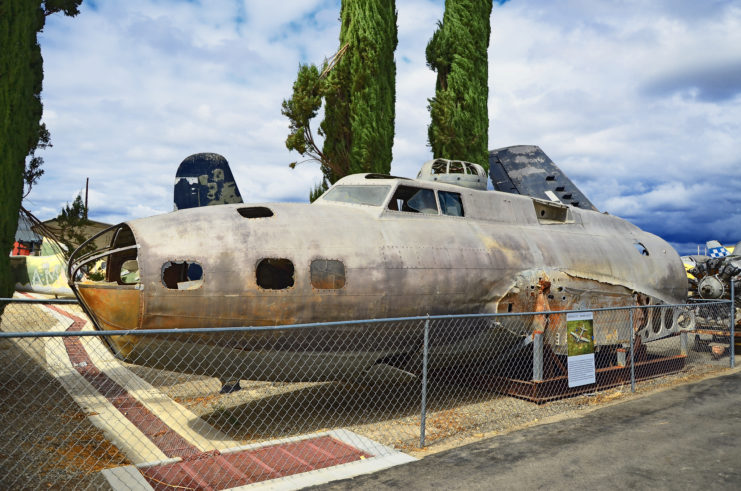In 1972, while flying over the swamplands of Papua New Guinea, airmen from the Royal Australian Air Force (RAAF) noticed something strange beneath them. The large object stood out sharply from its environment, igniting their curiosity to determine what it was.
After carefully maneuvering through the difficult swamp terrain, they ultimately arrived at the mysterious discovery: a crashed aircraft that the locals called the “Swamp Ghost.” To their amazement, it turned out to be a Boeing B-17E Flying Fortress, a relic long forgotten by the Americans. However, the real surprise awaited them inside the abandoned aircraft.
The crew survived a death-defying crash

On February 23, 1942, just months after the Japanese attack on Pearl Harbor, Capt. Frederick C. Eaton Jr. piloted a B-17E Flying Fortress over Rabaul, Papua New Guinea, which had recently fallen to the Japanese forces. During the flight, the bomber was hit, damaging a wing and causing a critical fuel leak. This made it impossible for the crew to return to their base in Port Moresby.
Faced with no other options, Eaton attempted an emergency landing in what he believed was a wheat field. The crew survived the crash, but they quickly realized they’d landed in a swamp teeming with crocodiles. Despite the treacherous conditions, they managed to escape the swamp and were rescued by local villagers, who treated them for malaria. After recovering, the crew went on to serve for the remainder of World War II.
The legend of the “Swamp Ghost”

After the crash, neither the crew of the B-17E nor the US Air Force tried to retrieve the heavy bomber. It remained in the swamp, where it was visited by villagers. Soon, it became somewhat of a holy site, as mysterious things happened to those who dared explore the wreckage.
According to legend, some who ventured toward the aircraft never returned, while others contracted malaria and suffered from cognitive issues. This led locals to keep a distance and worship the area as a sacred place, to keep themselves safe from the strange phenomena.
Following the war, Papua New Guinea became a popular destination for relic hunters looking for downed aircraft, old guns and infrastructure, and other artifacts the jungle had swallowed up. The “Swamp Ghost” quickly became one of the main attractions.
Salvagers spotted the B-17E Flying Fortress in the jungle

When the Australian airmen spotted the B-17E in 1972, they were astonished by their discovery. The wreck was in remarkable condition, with thermoses filled with coffee poured by the original crew still intact!
In the 1980s, following news of the find, renowned aircraft salvager Fred Hagan and his partner, David Tallichet, embarked on a mission to locate and salvage the wreck. They were astonished to see that the “Swamp Ghost” remained in such excellent shape. Although most of the weapons and mechanics had been taken by locals, the interior was still impressive.
Hagan and Tallichet initiated the reconstruction of the heavy bomber to ensure it was strong enough for transport. However, setbacks delayed their efforts for several years. Ultimately, in 2006, the salvage mission was completed, except for one last hurdle: locals were resistant to its removal. After a ceremony to honor the spirits of the swamp, the aircraft was finally allowed to depart its resting place for the first time in 65 years.
Where is the “Swamp Ghost” now?
More from us: The Douglas SBD Dauntless Changed the Course of the Second World War In a Single Day
Want War History Online‘s content sent directly to your inbox? Sign up for our newsletter here!
Once it was fully restored, the “Swamp Ghost” was put on display at a ceremony in Long Beach, California that was attended by many family members of the original crew. It has since been permanently moved to the Pearl Harbor Aviation Museum in Hawaii, where it’s undergoing restoration.
